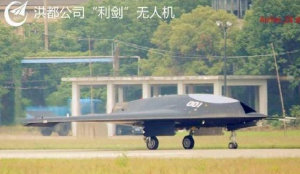
The state-run China Daily says this is a big deal, declaring that China has “again narrowed the air-power disparity between itself and Western nations.” Others are skeptical. Chinese military bloggers note that, based on the photos, the huge engine compromises its stealth, possibly because the Chinese Air Force has struggled to develop its own engines.
Some suspect that the Lijian is a reverse-engineered version of Russia’s Mikoyan Skat drone, equipped with a Russian-made turbofan engine. Gerry Doyle at Sinosphere concludes that “the stealth features that would make a drone like this a potential balance-shifter remain unproven in this design.”
But though it might not be a game-changer, the Lijian is another landmark in China’s development of drone technology—part of a larger military buildup that the Pentagon worries could prove “ potentially destabilizing ” in the Pacific, as The New York Times reported last year.
How might the Lijian “destabilize” things in the Pacific? Du Wenlong, a military expert, told Chinese reporters that the Lijian’s combat radius is sufficient to patrol the disputed waters around the Diaoyu/Senkaku islands, which both China and Japan claim. It can also provide high-resolution video of activity in the disputed territory, a former People’s Liberation Army major general told The South China Morning Post.
Used for video surveillance, the Lijian would escalate tension over the islands, as Rory Medcalf, a security expert at Sydney’s Lowey Institute, says. […]
Source: theatlantic.com
